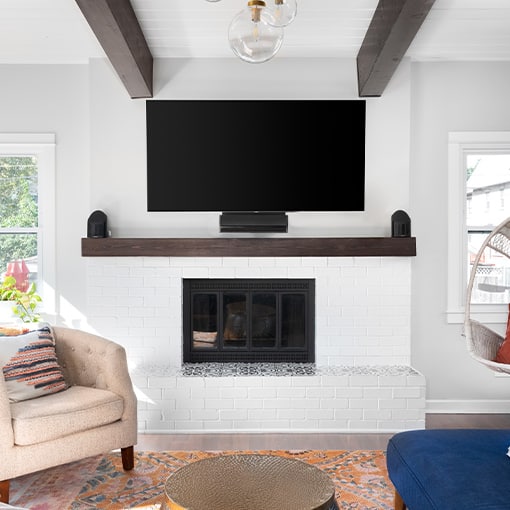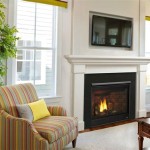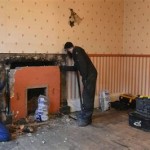How To Install a Flat Screen TV Above a Fireplace
Mounting a flat screen television above a fireplace is a popular design choice that can create a focal point in a living space, optimizing viewing angles and saving valuable floor space. However, this installation requires careful planning and execution to ensure the safety of the television, the structural integrity of the wall, and the comfort of the viewers. Considerations must be given to heat exposure, viewing height, and cable management.
This article provides a comprehensive guide on how to properly install a flat screen television above a fireplace, covering essential aspects from initial planning to the final mounting process. It aims to equip individuals with the knowledge necessary to safely and effectively complete this project, whether undertaking it independently or coordinating with professional installers.
1. Assessing the Suitability of the Installation
Before commencing the installation process, a thorough assessment of the environment is crucial. This involves evaluating the fireplace type, the wall structure, and the potential impact of heat on the television’s performance and longevity.
First, determine the type of fireplace. Gas fireplaces typically produce less heat directed upward compared to wood-burning fireplaces. Wood-burning fireplaces often radiate significant heat upwards, which can damage the electronic components of the television. Consider the fireplace’s usage frequency and intensity. If the fireplace is used frequently and intensely, the risk of heat damage to the television increases considerably.
Next, evaluate the wall structure. Most fireplaces are surrounded by either drywall or masonry. Drywall installations require identifying the wall studs for secure mounting. A stud finder is an essential tool for locating these studs. Masonry walls, such as brick or stone, require specialized anchors designed to provide a secure hold within the material. Attempting to mount directly to drywall without using studs or appropriate anchors will result in a failed and potentially dangerous installation.
Heat is a primary concern when mounting a television above a fireplace. Excessive heat can cause electronic components to malfunction, shorten the lifespan of the television, or even void the warranty. Measure the temperature above the fireplace when it is in use. If the temperature exceeds the television manufacturer's recommended operating range, which is typically found in the television's manual, alternative mounting locations should be considered. Installing a mantel or a heat shield can help deflect heat away from the television. These additions can significantly reduce the temperature gradient above the fireplace, making the installation safer for the electronic device.
Finally, consider viewing angles. Mounting a television too high can lead to neck strain and an uncomfortable viewing experience. Measure the distance between the viewing location and the proposed television location. Calculate the optimal viewing height, ensuring the middle of the television screen is at approximately eye level when seated. Tilting wall mounts can improve viewing angles when the television is mounted higher than the ideal height.
2. Gathering the Necessary Tools and Materials
Having the correct tools and materials is essential for a successful and safe television installation. This section outlines the specific items needed for the task.
A stud finder is necessary for locating wall studs in drywall installations. Choose a reliable stud finder that accurately identifies the edges of the studs. A level, preferably a bubble level or a laser level, ensures the television is mounted straight and even. Accurately leveling the mount is crucial for achieving a professional-looking installation.
A drill with various drill bits is required for creating pilot holes and securing the mounting bracket to the wall. Use drill bits appropriate for the wall material, such as wood drill bits for studs and masonry drill bits for brick or stone. A screwdriver, both Phillips head and flathead, is needed for assembling the mounting bracket and securing the television to the mount. A socket wrench set is helpful for tightening lag bolts or other heavy-duty fasteners.
A tape measure or measuring tape is essential for accurately determining the placement of the television and marking the locations for drilling. A pencil is used for marking the wall where the mounting bracket will be installed. Safety glasses protect the eyes from debris during drilling. Work gloves protect the hands and provide a better grip.
The wall mount itself must be compatible with the television’s VESA (Video Electronics Standards Association) mounting pattern and weight. The VESA pattern refers to the spacing of the mounting holes on the back of the television. Check the television's specifications to determine the correct VESA pattern and choose a mount that supports it. Ensure the mount is also rated to hold the weight of the television. A surge protector protects the television from power surges. HDMI cables connect the television to other devices, such as cable boxes or gaming consoles. Cable ties or straps manage and organize cables, creating a cleaner and more professional look. Paintable cable concealers can also be used to hide the cables completely.
For masonry walls, use masonry anchors that are specifically designed for brick or stone. These anchors provide a secure hold in the material and prevent the mount from pulling away from the wall. For drywall installations, use lag bolts to securely attach the mounting bracket to the wall studs. Avoid using drywall anchors alone, as they are not strong enough to support the weight of a television. A fish tape can be helpful for routing cables through the wall. The fish tape guides the cables through tight spaces and makes it easier to manage them.
3. The Installation Process
Following a meticulous process is critical for a safe and aesthetically pleasing installation. This section details the steps involved in mounting the television above the fireplace.
Begin by turning off the power to the electrical outlet near the fireplace. This ensures safety while working with electrical components. Locate the wall studs using a stud finder. Mark the locations of the studs with a pencil. If installing on a masonry wall, determine the appropriate locations for the masonry anchors.
Attach the mounting bracket to the back of the television, using the screws provided with the mount. Ensure the bracket is securely attached to the television. If the television has a curved back, use spacers to ensure the bracket is properly aligned. Position the mounting bracket on the wall, aligning it with the marked stud locations or the determined anchor points for masonry. Use a level to ensure the bracket is perfectly aligned horizontally. Mark the locations for the pilot holes through the mounting bracket.
Drill pilot holes at the marked locations. For drywall installations, drill through the drywall and into the center of the wall studs. For masonry installations, use a masonry drill bit to drill holes deep enough to accommodate the masonry anchors. Attach the mounting bracket to the wall using lag bolts for drywall or masonry anchors for masonry. Tighten the bolts or anchors securely, ensuring the bracket is firmly attached to the wall. Double-check the bracket's stability before proceeding.
Carefully lift the television and attach it to the wall-mounted bracket. Follow the manufacturer’s instructions for attaching the television to the mount. Secure the television to the bracket using the provided screws or locking mechanisms. Double-check that all connections are secure.
Connect the necessary cables to the television, such as HDMI cables, power cables, and antenna cables. Organize the cables using cable ties or straps. Conceal the cables using cable concealers if desired. Route the cables through the wall if possible, ensuring they are properly secured and do not pose a safety hazard. Turn the power back on to the electrical outlet.
Test the television to ensure it is functioning correctly. Verify that all connected devices are working properly. Adjust the viewing angle of the television if necessary. Clean up the work area and dispose of any debris.
Ultimately, following these steps meticulously ensures a secure and visually appealing installation of a flat screen television above a fireplace. However, if uncertainty persists at any stage, consulting with a qualified professional is highly recommended to avoid potential damage or injury.

Can I Mount My Tv Above The Fireplace

Can I Mount My Tv Above The Fireplace

Installing A Tv Above The Fireplace

ᑕ❶ᑐ What To Consider Before Mounting A Tv Above Fireplace

ᑕ❶ᑐ What To Consider Before Mounting A Tv Above Fireplace

Everything You Need To Know About Tv Mounts For Fireplaces

Safely Mount A Tv Above An Electric Fireplace Touchstone Home S Inc

Condo Blues How To Mount A Big Flat Screen Tv In Small Niche

Mounting A Tv Over The Fireplace Common Myths Busted Cepro

3 Alternatives To Mounting Your Television Above The Fireplace Avs
Related Posts








